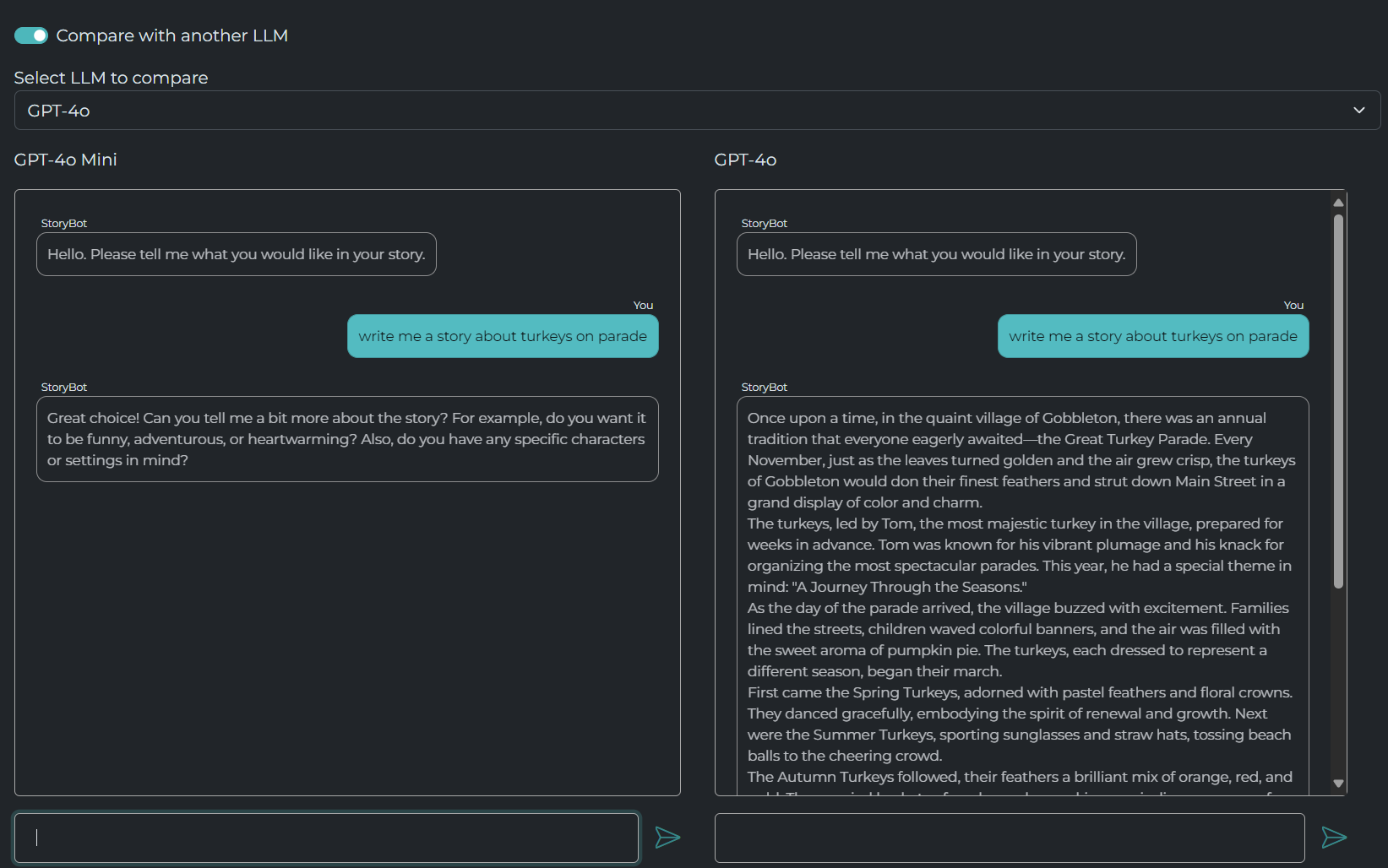Choosing your LLM
Copilot Builder stands out because it offers the flexibility to choose from multiple Large Language Models (LLMs). This is significant because different LLMs excel in various tasks and contexts. For instance, some models may be better suited for conversational interactions, while others might excel in generating creative content or processing technical information. By selecting the right LLM for your specific needs, you can enhance your copilot's performance, ensuring it delivers more accurate and relevant responses. This tailored approach allows users to create copilots that are not only effective but also aligned with their unique requirements, making the overall experience more engaging and productive.
Reasoning Models vs. Chat Models
General-Purpose Models (e.g., GPT-4o, GPT-4o-mini)
Strengths:
- Excellent for conversation, content generation, and multimodal tasks (text, image, audio).
- Fast response times, especially with mini variants.
- Versatile and cost-effective for broad use cases like chatbots, marketing content, and summarization.
Weaknesses:
- Less effective at deep reasoning, logic-heavy tasks, or multi-step problem-solving.
- May hallucinate or oversimplify in complex domains.
Best Use Cases:
- Larger models: Virtual assistants, multimodal apps, legal/financial analysis, medical text processing.
- Mini models: Customer support, SEO content, FAQ automation, lightweight coding help.
Reasoning Models (e.g., o1, o3-mini)
Strengths:
- Optimized for logic, math, coding, and structured problem-solving.
- Use chain-of-thought reasoning for step-by-step clarity.
- Ideal for high-accuracy tasks like scientific computation, legal drafting, and agent orchestration.
Weaknesses:
- Higher latency and cost due to internal “thinking” steps.
- Slower than general-purpose models.
Best Use Cases:
- Large models: Complex coding, business planning, legal review, scientific analysis.
- Mini models: Report writing, e-commerce recommendations, workflow automation, coding assistant.
When to Use What
- Need top-tier logic and coding? → Use reasoning models
- Need multimodal support and versatility? → Use general models
- Need fast, affordable results? → Use mini models (reasoning or general)
- Need structured reasoning + speed? → Use mini reasoning models
Pro Tip: Combine models! Use mini general models for general tasks and route complex logic to reasoning models.
Conclusion
Choose your model based on what you’re optimizing for:
- Speed & cost → General models
- Accuracy & reasoning → Reasoning models
- Multimodal & versatility → Large general models
Test and benchmark models in your own environment to find the best fit for your use case. A hybrid strategy often delivers the best results.
Try Out Multiple Models!
Copilot Builder allows you to experiment with different LLMs side by side! Just select the "Test" option for your copilot and slide the toggle to compare LLMs. From here you can choose which other LLM you want to compare results, and two test chats will appear below. Now, you can ask each LLM the same question and compare their responses.
